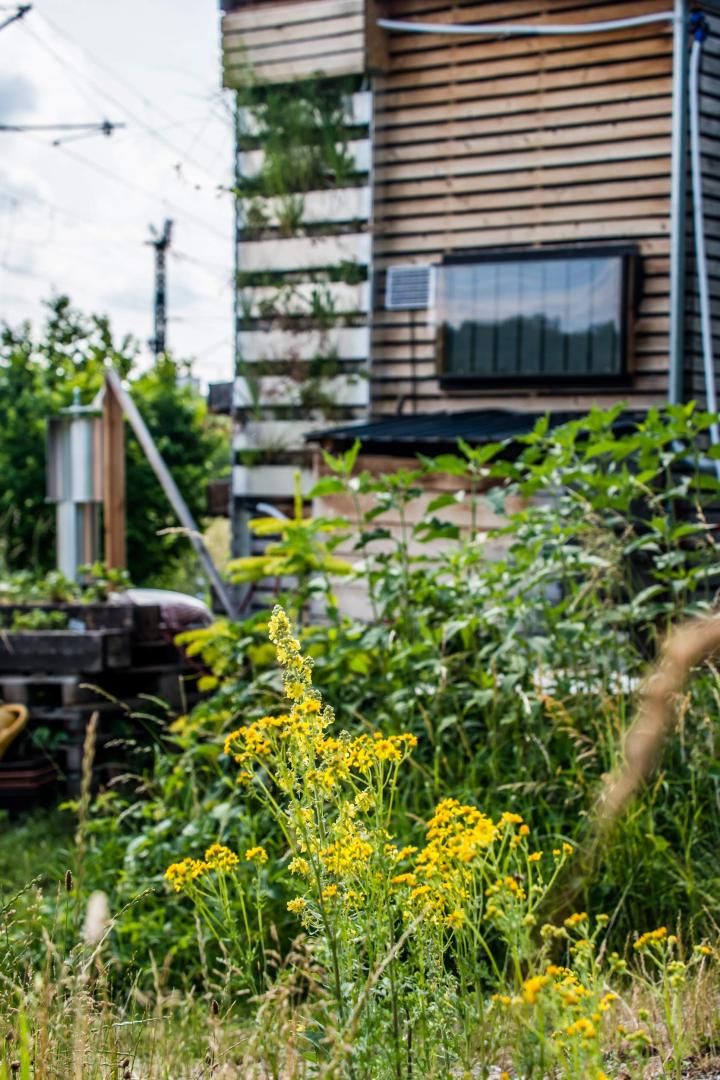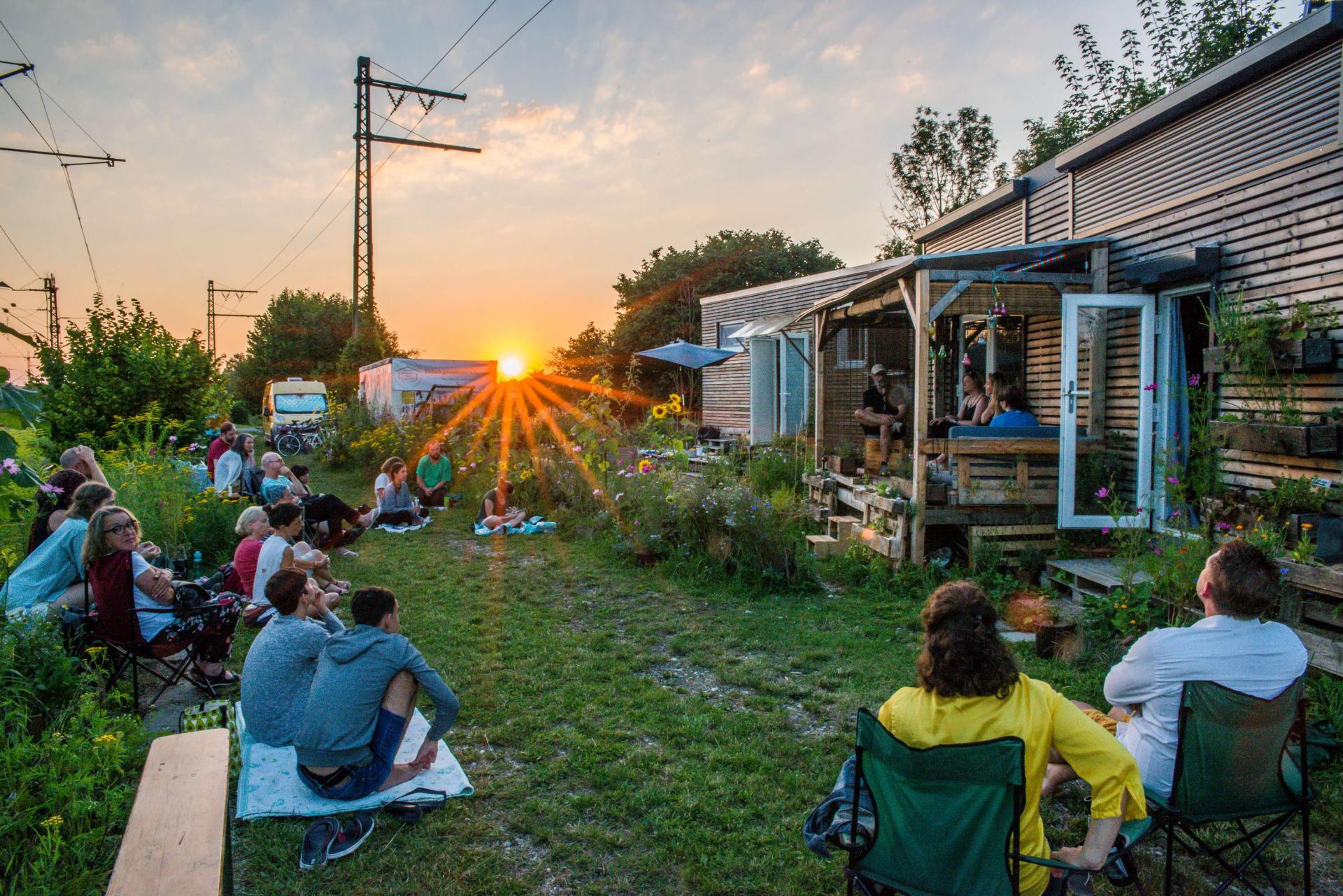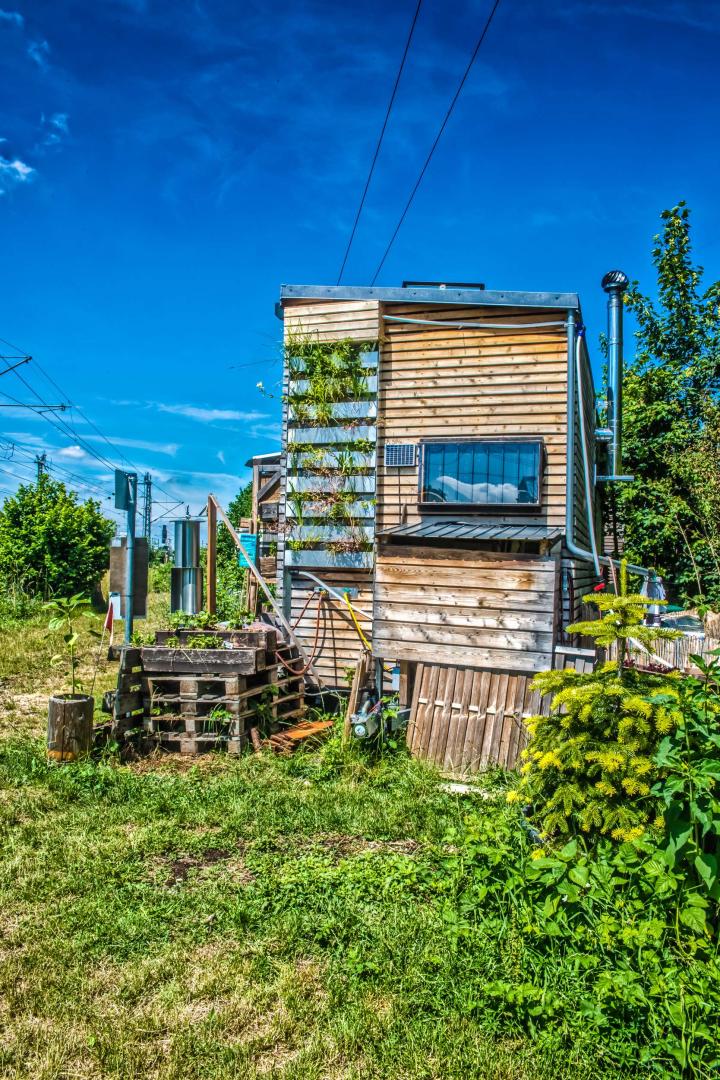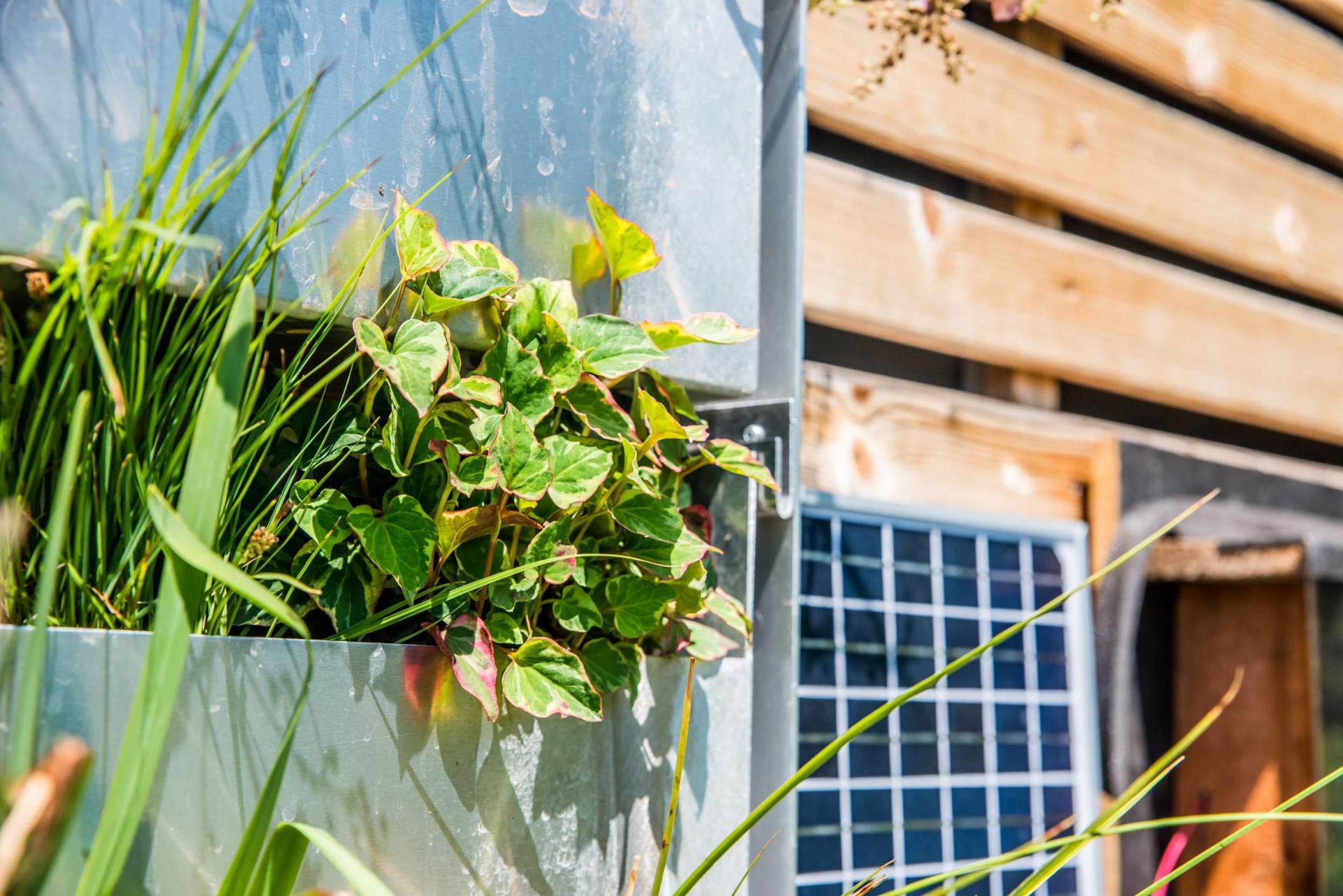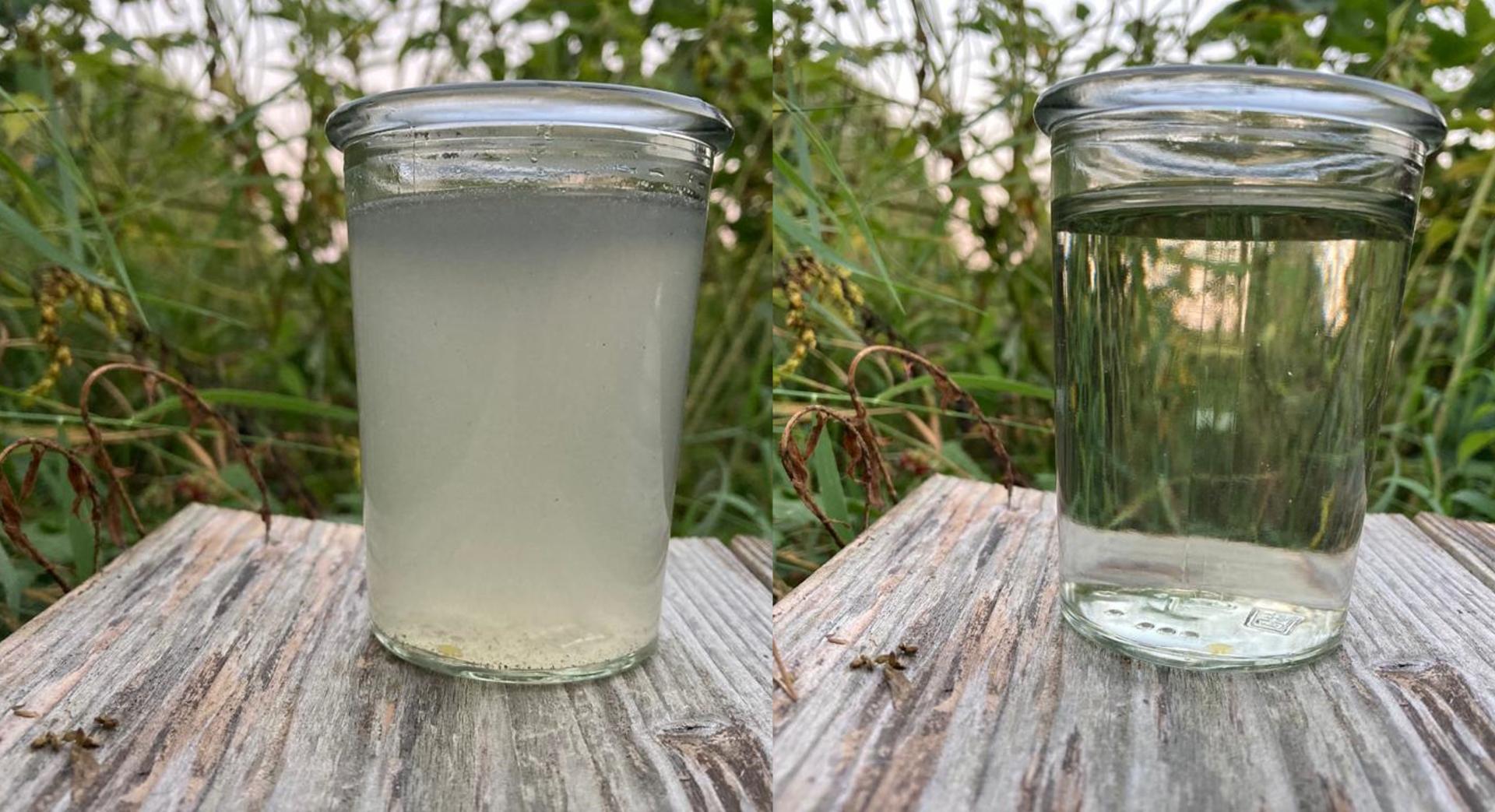Green Facade - greywater reuse
Basic information
Project Title
Full project title
Category
Project Description
The planted facade ecosystem for greywater treatment makes resource streams, closed water cycles, climate mitigation, facade greening and biodiversity measures tangible and experiencable for users, neighbours, strollers and fellow citizens. Respira and Tiny PopUp Munich want to show how multi-purpose NBS can help to save resources, facilitate circular thinking and planning, and mitigate climate change for a more resilient future.
Geographical Scope
Project Region
Urban or rural issues
Physical or other transformations
EU Programme or fund
Which funds
Description of the project
Summary
Respira is a Munich based start-up pushing the development of low tech nature based solutions (NBS) for climate mitigation, water management as well as sustainable education and consultancy regarding the analog and digital ecological footprint. Tiny PopUp is an alternative housing experiment focusing on resource efficiency, circular living practices, sustainability, public participation and environmental education.
Together we projected a planted facade ecosystem to treat the greywater of the Tiny PopUp on-site and evaluate its quality for potential reuse purposes. The waste streams are separated from the beginning. Human excreta are fed into a composting toilet, urine is diverted, stored and sterilized. The remaining wastewater stream, so called greywater, from sinks, a shower and a dishwasher is collected in a buffer tank acting as a grease and sediment trap. The pre-processed greywater is than fed into the facade based biological system, which serves multiple purposes.
The sun exposed native plants are continuously watered and provided with nutrients. As a result they thrive, accumulate CO2, produce oxygen, humidify the air, cool the microclimate, provide habitat and food, reduce noise and particulate matter in the air and increase psychological wellbeing. The treated greywater is aimed to use for watering and groundwater recharge purposes, whereby the pressure on freshwater resources would diminish. This in not only necessary in (semi-)arid areas of the globe, also the water rich alpine countries are projected to suffer from occasional droughts.
The planted facade ecosystem for greywater treatment makes resource streams, closed water cycles, climate mitigation and biodiversity measures tangible and experienceable for users, neighbors, strollers and fellow citizens. Respira and Tiny PopUp Munich want to show how multi-purpose NBS can help to save resources, facilitate circular thinking and planning, and mitigate climate change for a more resilient future
Key objectives for sustainability
The key objectives were to contribute to the solution of various global environmental challenges / movements, namely
- climate change
- water stress or scarcity / sanitation transformation
- peak nutrients (e.g. phosphorous) / sanitation transformation
- circular economy, waste as resources / sanitation transformation
- loss of biodiversity
- air pollution
- depressions
With the evapotranspiration of the planted facade, we contribute to climate change mitigation measures as the nearby microclimate is cooled (1): few degrees can make a noticeable difference in the quality of live and human health. Additionally, the building to which the planted system is attached to, doesn't heat up as much as a plain concrete surface, whereby cooling costs are reduced.
Rainfall pattern and extreme heat waves are likely to occur more frequently which puts water resources and competing stakeholders under pressure. Using what we now call wastewater as a resource (4) to water plants, while at the same time supplying nutrients (3), and thereby helping them to thrive in order to provide habitat for animals (5) and clean the dirty water by biological degradation to allow water reuse (2), the project met all objectives. The leaf area binds air particulate matter to a greater extent than a plain grey facade (6) and increases psychological wellbeing (7) by just looking at it.
Facade based solution don't compete with land use strategies and their stakeholders. The system can therefore be exemplary as a multi-purpose NBS can be retrofitted to so far un-/undervalued spaces of the built environment.
Key objectives for aesthetics and quality
Some visible components of the system were designed in cooperation with the user. The design of the existing wooden housing facade was adopted to cover and mount one component, and ultimately to make the retrofitted treatment system part of the house. That way a high user satisfaction as well as coherent aesthetics could be achieved. The metal parts were chosen to maintain a clean industrial design without coating, although this could be an option if needed, to keep the spirit of the users and the house itself.
Nowadays municipal wastewater treatment is centralized. Our wastewater is flushed away, out of sight, out of mind. Treating greywater on-site, close to where it is being produced facilitates a better understanding and more consciousness. The terms resource efficiency, waste/resource streams, nature-based solutions/ecosystem services become tangible for users and interested groups, and that way allow experience beyond its functionality.
Key objectives for inclusion
During the design one priority lay in the use of as many readymade /shelf parts as possible to make the system
- affordable
- easy to use and maintain
- accessible
- practicable
All periodic O&M tasks can be done by the users themselves, everything from lid to whose is easily accessible, and no maintenance engineer has to be paid on a regular basis. Most broken parts don't have to be ordered at specialized workshop/professional and can be bought in online or analog hardware stores instead. If one of the few welded parts would fail, the whole system won't fail at once. The drawer like substructure (for which we took care that the weight is manageable for an average person, to reduce the risk of work accidents and make lift unnecessary) makes the repair, maintenance or exchange fast and easy.
Users should be able to operate and maintain the system by themselves to minimize costs and to allow a widespread use of the system on the one side, but also to better understand the system, be close and learn about the processes which usually happen unnoticed, far away from where we produce our waste. And with the users also the public benefits from this new consciousness.
Results in relation to category
The project and its impact perfectly pinpointed the categories description. The planted facade ecosystem could and should be one pillar of our approach to start acting towards a more environmentally conscious circular economy and towards actions for climate change mitigation.
It is a resilient circular industrial ecosystem with a chain of added benefits and everyone who gets involved learns more about life cycle thinking. And this supports the society as a whole.
The construction follows the principles of the circular economy, as no components are glued, all components can easily be replaced, waste is repurposed to a resource, and sustainable, regrowing biological systems assist by doing what they do best: create, renew and be part of our base of existence.
How Citizens benefit
The prototype of the greenwall was implemented in the Tiny PopUp. Initially planned by respira, the greenwall was adapted to the needs and requirements on site with the help of the founders of the Tiny PopUp. Considerations included building size, water consumption, weather conditions, location, cladding material and infrastructure. Since the Tiny PopUp is completely off-grid, an efficient pumping system with the minimum possible energy consumption had to be installed. Feedback loops regarding design and implementation were facilitated with the founders of the Tiny PopUp Project. The expanded involvement of citizens in future implementations will result in a better acceptance of the users towards the nature-based solution.
Physical or other transformations
Innovative character
Today wastewater is collected and treated at central, mostly village/municipal/city owned wastewater treatment plants. This has proven successful for the past decades as potentially harmful excreta were transported fast out of the human agglomerations, increased human as well as aquatic ecosystems health. But we are faced with other challenges today which trigger partial need to change, a sanitation revolution:
- We will reach peak phosphor in the coming decades
- Droughts and strong rainfalls are washing away soil and nutrients
- we are flushing away carbon and nutrients with freshwater, with costly infrastructure (which is hard to maintain) and treat it in always too small treatment plants using energy
Instead, we could compost excreta, increase the soil organic carbon in agricultural soils to increase its water and nutrient holding capacity on the one hand.
Further, as stated above, droughts are predicted to occur more frequently and in fact they already hit many parts of the globe. If the pressure on freshwater resources such as groundwater increases, the stakeholders would increase their pressure likewise. If we don't want drinking water, farming, shipping, and ecosystems to compete with each other, changing our water consumption practices is inevitable. Reducing freshwater consumption by treating and reusing greywater with biological systems is a solution for a nexus of challenges (climate mitigation, water stress, loss of biodiversity, air pollution, psychological stress, etc.)
Learning transferred to other parties
Urbanization is increasing, but some so far unused (semi-)urban microsites which sometimes are too small to construct a building could serve alternative housing projects. Although urbanization is increasing, there is also an ever-increasing countermovement to leave the cities to live healthier and more sustainable. If no sewage system is nearby, owners have to use alternative systems to treat their waste(water). A facade-based greywater treatment would be cheaper than building conventional systems as earthwork and disposal costs are rising. The governments are slowly supporting these alternatives to contribute and facilitate a shift in sanitation practices. One way or another, alternative solutions to better handle sanitation and resources are needed, with a rising tendency.
As impacts increases with a widespread application of a system, focus lay in the principles i) low-tech and ii) use of readymade/shelf articles to secure affordability and accessibility. As the system is based on the natural processes sedimentation, filtration, sorption and biological degradation it could be applied in all parts of the world if the biological system would be adapted to the climate. Native plants can be multiplied on ones' own or sourced from a local nursery if some would die off eventually. Besides metal parts, every spare part can be replaced by the users themselves from local shops

